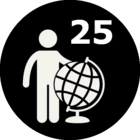I've a lot of xml files ISO191115 (like the one at the link below) with some spatial info as the EX_BoundingPolygon that I need to extract for build up some feature in kml or shape format.
Do you have any idea or suggestions?
TIA
ciao
fz
link to example file:
https://api.echo.nasa.gov/catalog-rest/echo_catalog/granules/G26813121-LPDAAC_ECS.iso19115_2?token=3F8812EE-8A4F-EAFF-FE95-E6A036ACC3C1








